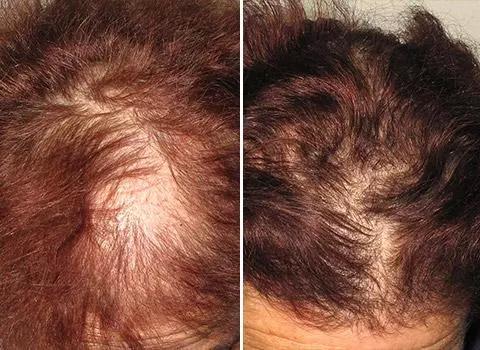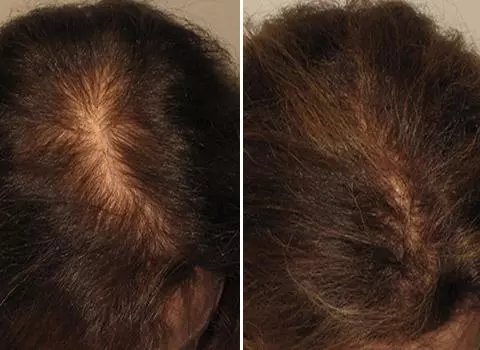A black market clinic is a rogue clinic staffed by technicians or non-doctors (sometimes including one doctor to mislead patients) facilitating illegal practices. This is happening all over the United States.
Men's and women's hair restoration surgery today is a $4 billion global industry—the enormity of that number highlights a clear motivation for a black market where clinics gear their marketing and advertising to mislead the public into believing that technicians have a high degree of training and are just as capable as a surgeon to perform most – if not all – of the procedure. And that doing so allows them to profit by acting as hair restoration surgeons and offering hair restoration surgeries at a large discount.
The ISHRS (International Society of Hair Restoration Surgeons of which Dr. Gray is a member) believes the following aspects of hair restoration surgery should only be performed by a licensed physician*:
- Preoperative diagnostic evaluation and consultation
- Surgery planning
- Surgery execution including:
- Donor hair harvesting - Hairline design - Recipient site creation
- Management of other patient medical issues and possible adverse reactions
- Post-operative care
Understanding the roles and responsibilities of the individuals involved in your surgery is very important. Patients around the country are suffering from injuries, scarring, over-harvested donor areas, and irreparable aesthetic results.
If you don't fully understand what techs are qualified to do, you may be unaware when they do perform outside the scope of their job or "practice medicine without a license." Let's be clear- techs do not have medical licenses; they are like medical assistants and have on-the-job training.
Evolution of Transplants, Doctors, and Techs
For decades, physicians developed and refined an advanced technique for donor harvesting called follicular unit transplantation (FUT), which involved removing a linear strip of donor hair and skin from the area of greatest density in the back and sides of the head.
It required the doctor to have the ability to use a scalpel, understand scalp anatomy, and know the principles of suturing. It also required a team of well-trained technicians to carefully dissect the naturally occurring hair bundles (follicular units) from the strip of tissue under microscopic dissection and handle the grafts to avoid harm or destruction. The tiny follicular unit grafts were then re-distributed into tiny micro incisions in the areas of hair loss.
This donor harvesting technique and follicular unit grafts outdated the old “punch and plug” technique (dolls hair appearance). As graft session sizes became larger and larger, doctors trained more staff and delegated graft placement to improve the efficiency of the hair restoration procedure.
Unfortunately, a few doctors also began allowing their technicians to make surgical recipient site incisions for graft placement (essentially practicing surgery)—arguing that a needle stick was not an incision. This permission led to unlicensed technicians becoming rogue or illegal “overnight” hair transplant surgeons.
Ethical techs understood they were assisting their surgeons and understood they did not have a medical license to engage in the independent performance of medical procedures. i.e. making surgical recipient sites.
However, other trained techs decided to further capitalize on their skills and began contracting independently to doctors, some of whom could not perform hair restoration surgery themselves. These doctors, for most jurisdictions, violated medical regulations requiring a doctor to be adept and knowledgeable about any procedure they would delegate or supervise.
Removing the donor area in FUT required a doctor (and, in turn, a scalpel and suturing), and this became the only ‘stumbling block’ until a different surgical technique to remove donor grafts was developed - FUE or follicular unit extraction.
How Did the Evolution of FUE (Follicular Unit Extraction) Promote the Hair Transplant Black Market?
About a decade ago, a new technique called FUE (follicular unit extraction) began gaining popularity; no more cutting with a scalpel or suturing was required. This technique used a micro punch 1 mm or less in size to remove individual hair follicular units or groupings, creating larger skin wounding areas by producing thousands of tiny but open full-thickness excisions in the scalp, depending on the graft numbers needed or planned for a given surgery.
It was advertised and accepted as "minimally invasive" because the single larger open wound was not created (like in strip surgery). Also, it was easier for technicians and marketers to reason as not "real surgery" because it did not require the skill to use a scalpel or the expertise to suture.
This, of course, is not true. Full-thickness incisions into the scalp to remove graft tissue are surgery. The FUE procedure still requires medical expertise to perform the surgery safely and correctly. As each square centimeter is addressed, thoughtful medical decisions about the density of donor harvesting need to be made. Also, mastery in administering local anesthesia to large areas of the scalp during long surgery sessions over 4 hours is critical for the patient.
Nevertheless, the FUE technique of micro punch harvesting made it easier for some doctors who did not want to learn this technique or could not perform it to start delegating it to unlicensed technician staff.
Money To Be Made
In some places, allowing unlicensed, unregulated technicians to perform FUE surgery, even under supervision, fueled those with no training to believe they could perform surgery using a medical professional's name and license.
A common occurrence in many cosmetic surgery offices in the United States is that a "token" doctor will buy a heavily marketed device to help with FUE donor harvesting and advertise their own credentials to attract patients. Then, in a 'bait and switch' type operation, bring in unlicensed, unregulated technicians who are cheap labor to perform most, if not the entire procedure. Cheap labor allows clinics to offer lower procedure prices, and doctors and medical sales reps can make more significant profits by allowing these technicians to work on multiple patients simultaneously.
Patients must be aware that these "token doctors" may fraudulently advertise their credentials to attract patients and may even meet with them to discuss the procedure, but are minimally involved, if at all, with performing any part of the hair transplant surgery.
It is not uncommon for one doctor, expected to perform the surgery, to roam the hallways saying hello to patients while unlicensed technicians perform dozens of surgery cases simultaneously from start to finish.
Why Should You Care?
Patients should care because of what they are risking and what they are losing. Shopping around for medical care with associated medical risks is far different from buying a purse, shoes, or sunglasses.
The consequences of a bad hair restoration surgery can vary from minor to severe and even life-threatening and will last a lifetime. As for the deep discounts such clinics claim, a botched hair transplant is no bargain. The additional expense to correct bad results will be greater than had you initially chosen an ethical practice – assuming enough hair remains in the donor area to be harvested.
Surgery fees vary based on local economies and costs of living. So lower prices offered by some clinics or doctors in a particular region do not necessarily prove them as promoting Black Market surgery. However, patients need to be aware that what appears to be a "great deal" must be scrutinized for the telltale signs of the hair restoration surgery.
Some black market clinics have "great deals" because they are eliminating the cost of medical expertise via medical school and proper training. This is a dangerous choice for many reasons.
- During initial consultations, the lack of a knowledgeable medical practitioner eliminates the opportunity for a patient with a medically reversible diagnosis to be treated and avoid surgery.
- It also prevents patients who are not good candidates for surgery—e.g., too little donor hair- from learning this before spending money on an unnecessary, bad, or failed procedure.
- Supporting unlicensed, unregulated technicians also avoids medical supervising professional licensing boards, which can suspend or revoke licensure for medical practitioners who harm patients.
- Doctors who break medical delegation regulations also violate a patient's right to informed consent if the doctor doesn't get a patient's permission before allowing the surgery to be done by someone else. More importantly, patient safety may be compromised when receiving surgery at a clinic operating outside the expected acceptable medical regulatory and ethical guidelines.
- Choosing a Black Market clinic eliminates malpractice insurance costs because these clinics involve people who are not insured or, in the case of a token doctor, would likely need to lie about their improper delegation model to get their insurer to cover an incident. This need for scams saturates the ethics of care that patients receive.
How Can Patients Tell If They Are Being Courted by a Black Market clinic?
Black Market marketers have built an entire industry by misleading hair loss consumers with false and fraudulent advertising.
Did you meet with a doctor? Were lines drawn? Was there a discussion about density and the number of grafts needed to achieve your goals?
As we have discussed, Black Market marketers often promote the presence of an experienced doctor when there is none; and show before and after photos of excellent patient results– that may not be their doctors’ actual patients.
Pay attention to what you read. Low prices and false advertising with misleading information lure vulnerable patients. Does the practice specifically state who will perform the surgery on their website or elsewhere? An MD on a billboard may be backing the medical practice, but read their website. If it only gives information about hair transplants and does not specifically state who will perform the surgery, the answer is usually techs performing surgery. Techs cannot do surgery.
Black Market clinics sometimes attract patients with predatory pricing—offering as many grafts as they can excise at one low price. Furthermore, some patients searching for low-cost surgery mistakenly believe they are merely bargain hunting, unaware they could lose long-standing patient protections when they either choose or are inadvertently drawn into the Black Market.
Pay attention to wording about pricing. There is no one size fits all transplant procedure at one price that will satisfy every patient’s needs. If a concrete low final procedure price is promoted before anyone sees you, that’s a problem. Clinics will do everything in their power not to disclose how many grafts you are paying for while acting as though the procedure they recommend is “all you need”. You will likely be paying for a small number of grafts and unnecessary extra charges.
Ask these questions when deciding to have surgery with a particular doctor or clinic to reduce the risks associated with Black Market clinics.
- Check with local/regional authorities to ensure that any “doctor” advertising for your business is legally licensed to operate in the advertised jurisdiction.
- Know what your surgeon is supposed to look like, and what their experience and training in hair restoration surgery has been, review before and after examples of their work that are not “stock” photos (ask your surgeon to verify this) and make it known that only your surgeon or a licensed professional operating in their scope of practice delegated by your surgeon—with your consent—will be allowed to make any incisions/excisions on your scalp/body.
- Ask who will be designing your hairline, supervising graft placement, and determining anesthetic requirements. All of these tasks require judgements that should be made by your doctor or licensed medical professional operating within their scope of practice.
- Inquire how many surgery cases will be performed at the same time under your doctors supervision. If there are multiple cases happening, it is likely your surgery is being performed by someone who is not your doctor, and you should know who that is, whether they are licensed to perform surgery, and how they will be held responsible or who will assist you if there are any difficulties in your postoperative course.
At HT&RC we are here to come up with and develop the best treatment option that works for you. If you’re dealing with hair loss and need a hair transplant, contact HT&RC to schedule a consultation.






